The Navigation Computer: Volume to Weight
There is also a facility on the Navigation Computer to convert volume in litres or gallons to weight in kilograms or pounds if you know the specific gravity of the liquid (usually fuel). These indices have been spaced so that you can begin with an argument in one set of units and read off the answer in the other units.
A little revision on specific gravity may be useful here. Specific gravity (also known as ‘relative density’) is the density compared with the density of water. One litre of water weighs ONE kilogram in the metric system and one imperial gallon of water weighs TEN pounds in the imperial system. For example, if a fuel has a specific gravity of 0.80, then one litre weighs 0.80 kg and one imp.gal weighs 8.0 pounds.
The calorific value of fuel is related to its mass, not its volume. You need a greater volume of fuel at a lower SG to give the same amount of energy as a smaller volume at a higher SG. This energy may be expressed as range in nautical air miles, or possibly as endurance. Thus, 200 litres at .80 SG weighs 160 kg. If fuel at .75 SG is used, then 213 litres will be needed to cover the same distance.
Example: Convert 300 US gallons to:
a) imperial gallons
b) litres
c) pounds weight
d) kilograms
using a Specific Gravity of 0.80.
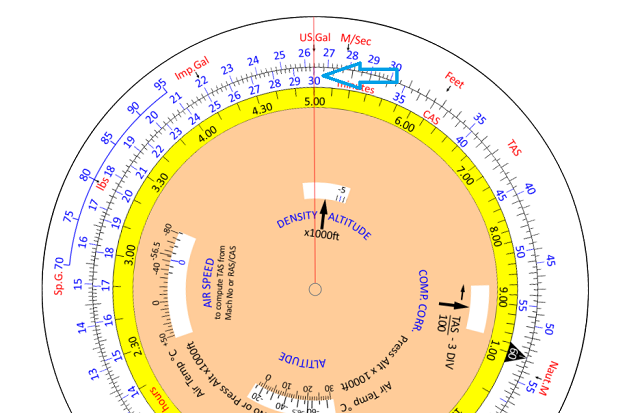
As always, set what you know. Align 300 on the inner scale against the u.s. gal index on the outer scale.
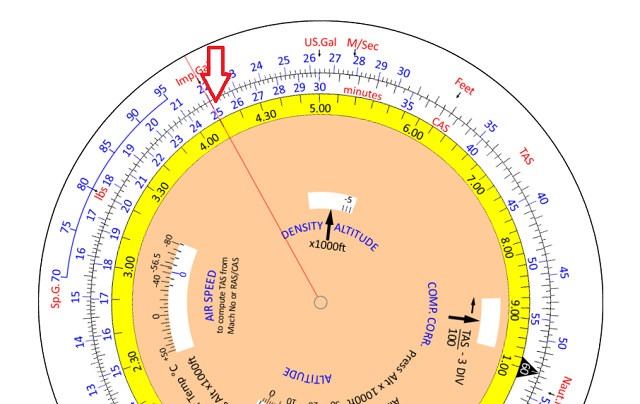
Read off against the imp.gal index. This gives 250 Imperial gallons.
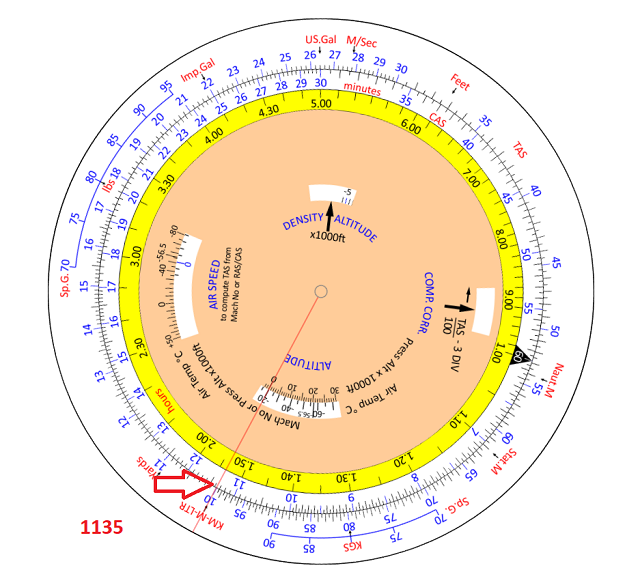
Now read off against the litres index. This gives 1135 litres.
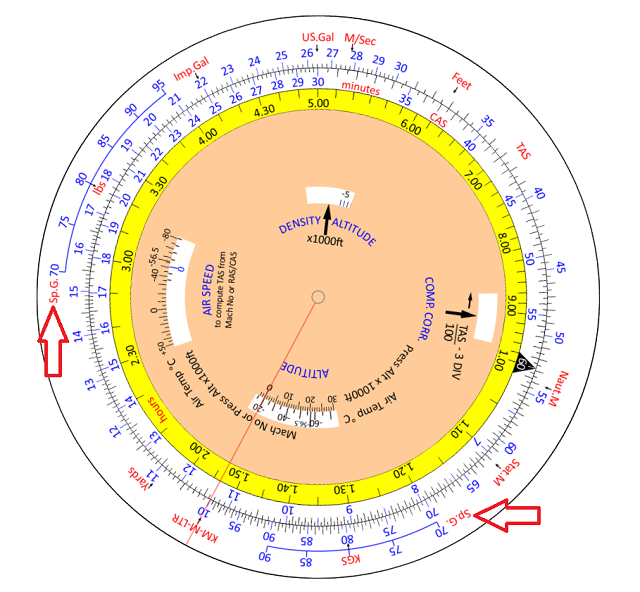
So far, so familiar. Now look at these 2 scales.
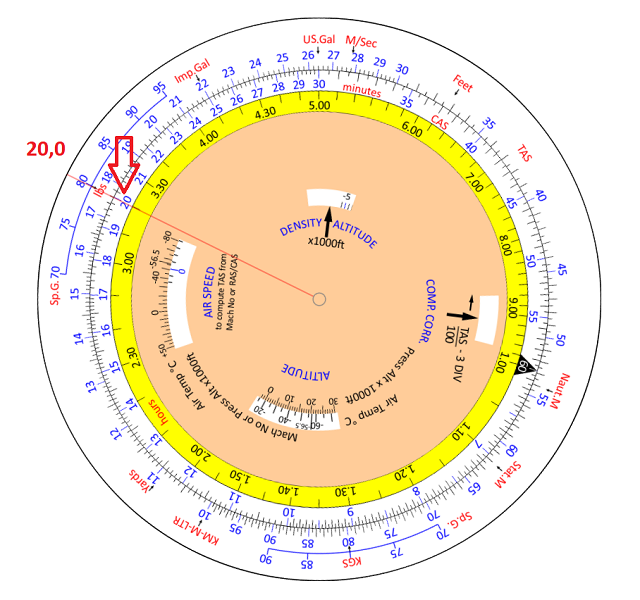
Let us do the ‘pounds weight’ conversion first.
Without moving the inner scale, which is already set up as you require, move the cursor to 0.80 specific gravity on the Sp.G lbs scale. This scale is marked from 70 to 95, representing SGs of 0.70 to 0.95.
Read off 20.0 on the inner scale.
What is the order of magnitude? Remember, we are dealing with 250 imp.gal. Remember, the SG is 0.8. Therefore we are expecting an answer of about 2000 lb.
In this case, the answer is exactly 2000 lb.
Now, the conversion to kilograms.
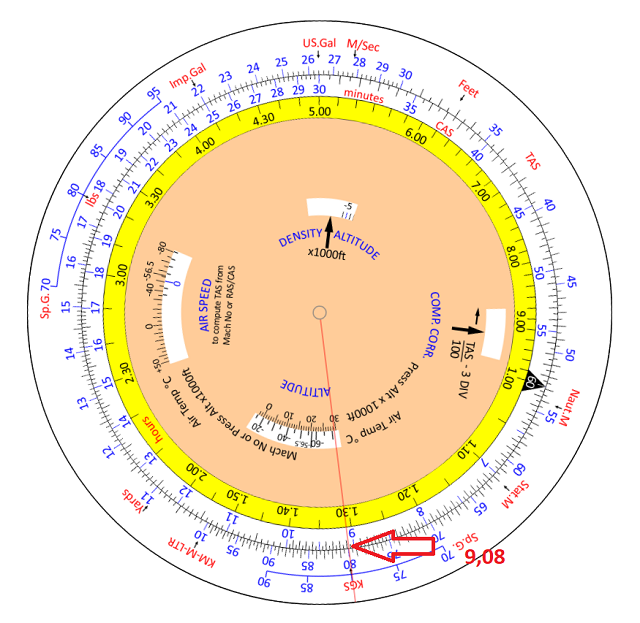
Again, we do not move the inner scale.
Move the cursor to 0.80 on the Sp.G kgs scale. The scale is marked for 70 to 90, representing SGs of 0.70 to 0.90.
Read off 9.08 on the inner scale.
What is the order of magnitude?
There are various ways you can estimate this. Either 1135 litres times .8 is about 900 kg, or 2000 lb is going to be just under 1000 kilograms.
Therefore the answer is 908 kg.
© 2022 terms of use privacy policy